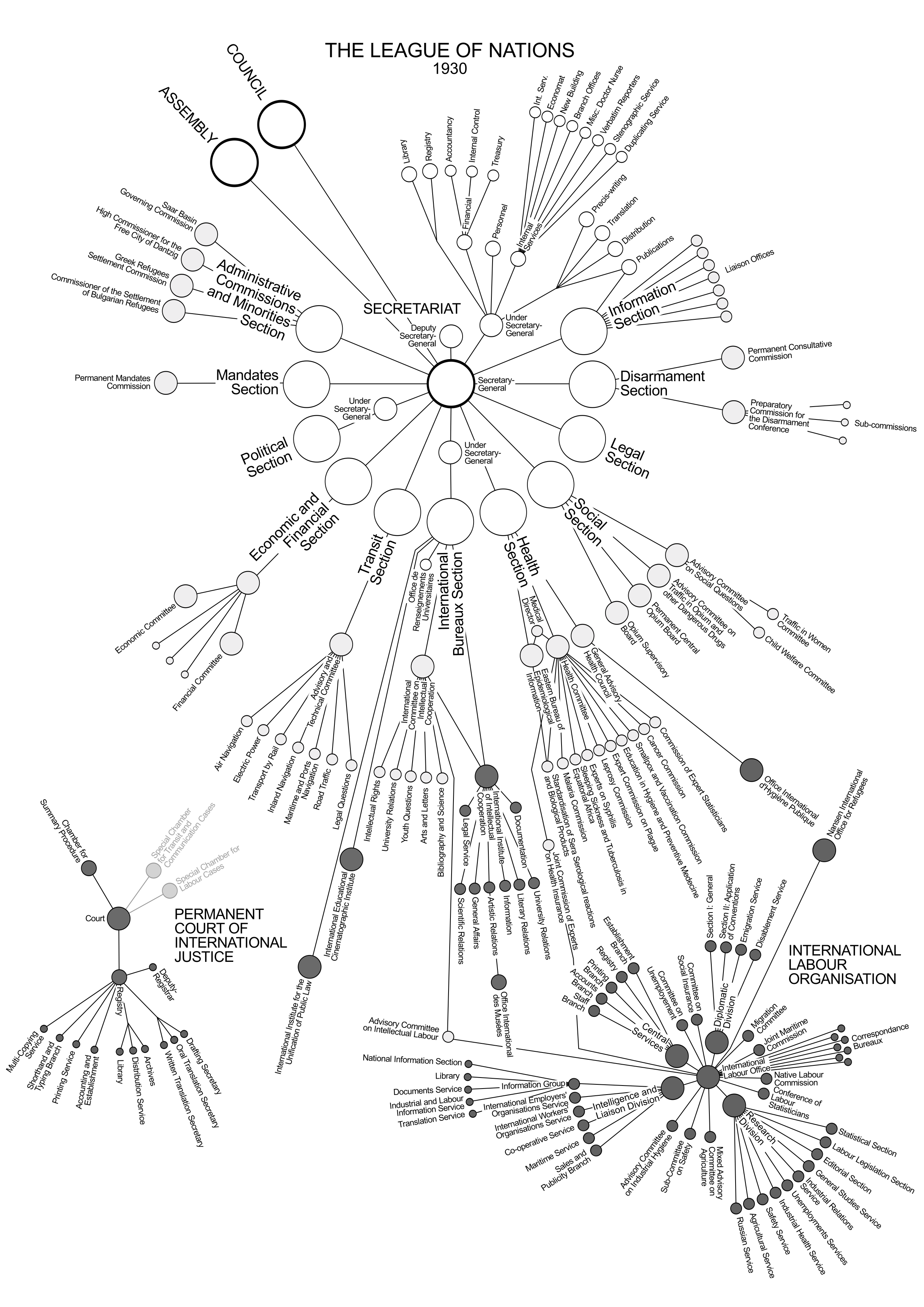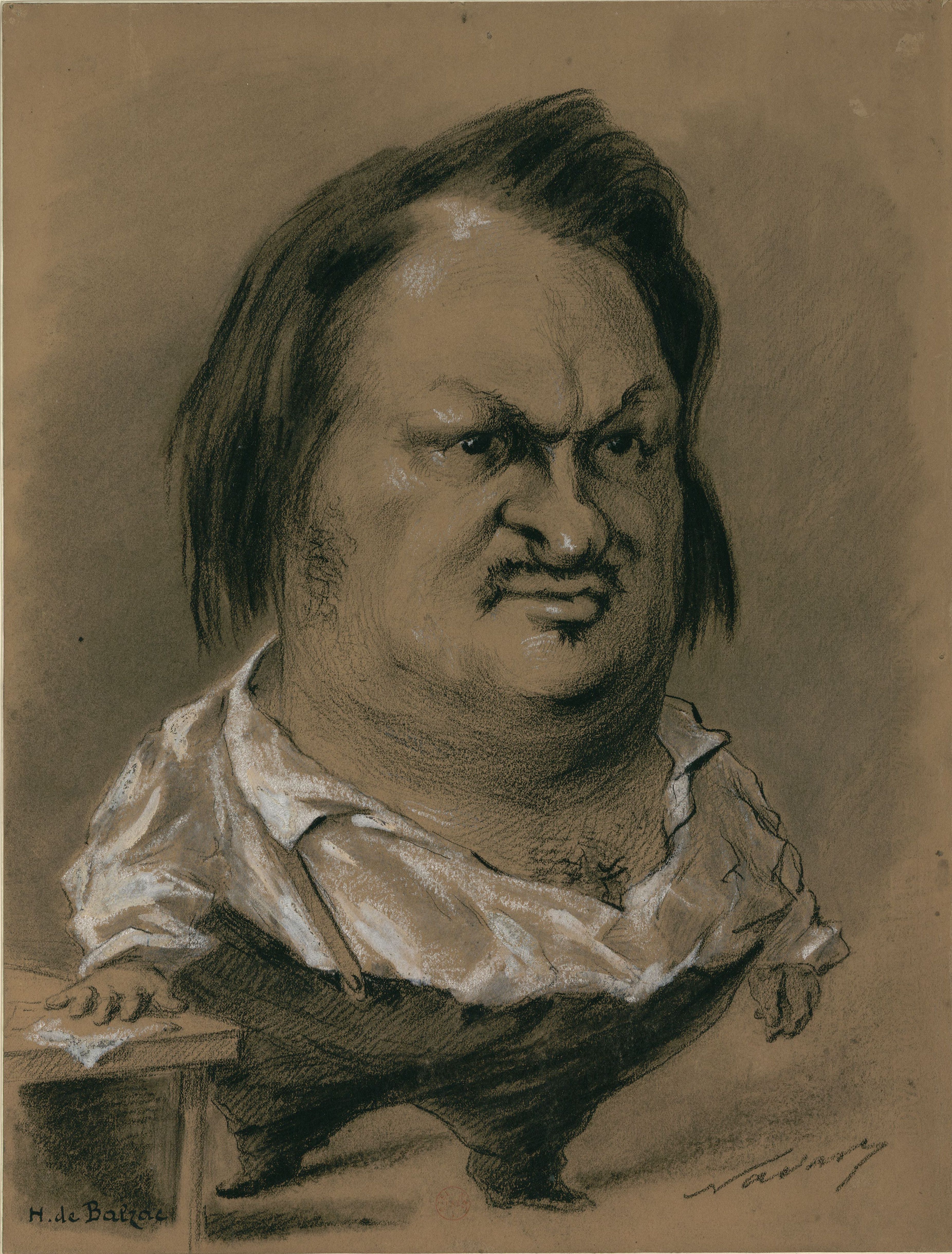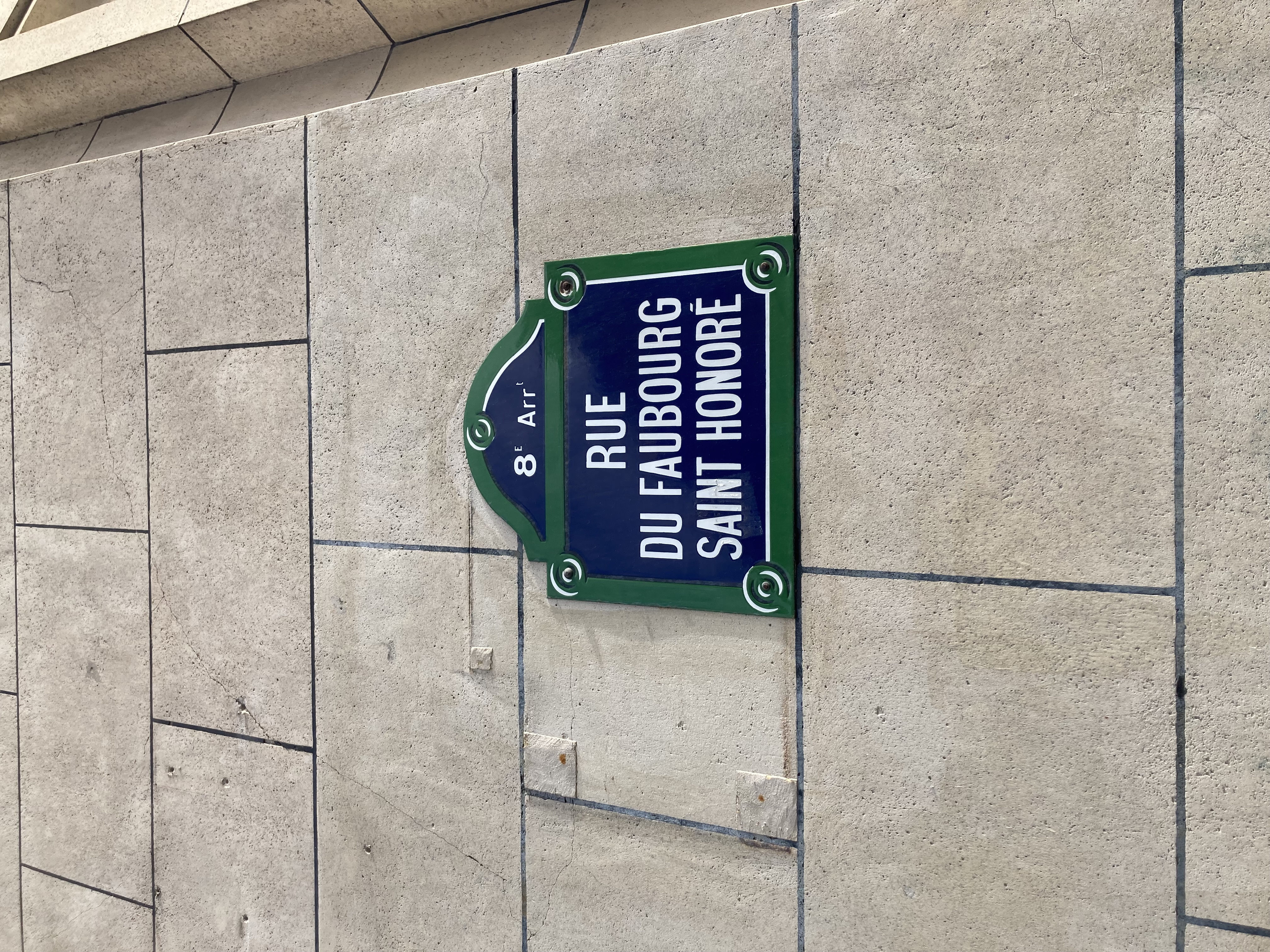|
Boulevard Saint Germain
The Boulevard Saint-Germain () is a major street in Paris on the Rive Gauche of the Seine. It curves in a 3.5-kilometre (2.1 miles) arc from the Pont de Sully in the east (the bridge at the edge of Île Saint-Louis) to the Pont de la Concorde (the bridge to the Place de la Concorde) in the west and traverses the 5th, 6th and 7th arrondissements. At its midpoint, the boulevard is traversed by the north-south Boulevard Saint-Michel. The boulevard is most famous for crossing the Saint-Germain-des-Prés quarter from which it derives its name. History The Boulevard Saint-Germain was the most important part of Haussmann's renovation of Paris (1850s and '60s) on the Left Bank. The boulevard replaced numerous small streets which approximated its path, including, from west to east (to the current Boulevard Saint-Michel), the Rue Saint-Dominique, Rue Taranne, Rue Sainte-Marguerite, Rue des Boucheries and Rue des Cordeliers.''Saint-Germain-des-Prés et son faubourg'', Dominique Leborg ... [...More Info...] [...Related Items...] OR: [Wikipedia] [Google] [Baidu] |
Boulevard Saint-Germain, Paris June 2010
A boulevard is a type of broad avenue planted with rows of trees, or in parts of North America, any urban highway or wide road in a commercial district. In Europe, boulevards were originally circumferential roads following the line of former city walls. In North American usage, boulevards may be wide, multi-lane thoroughfares divided with only a central median. Etymology The word ''boulevard'' is borrowed from French. In France, it originally meant the flat surface of a rampart, and later a promenade taking the place of a demolished fortification. It is a borrowing from the Dutch word ' ' bulwark'. Notable examples Asia Azerbaijan *Baku Boulevard Bangladesh *Manik Mia Avenue Cambodia *Norodom Boulevard *Monivong Boulevard *Sihanouk Boulevard India * M G Road *Anna Salai * Indira Gandhi Sarani * Marine Drive * Krishnaraja Boulevard *Rajpath *Necklace Road * Mahatma Gandhi Road *Foreshore Road Indonesia *Jalan Jenderal Sudirman *Jalan M.H. Thamrin *Jalan Jenderal Gatot ... [...More Info...] [...Related Items...] OR: [Wikipedia] [Google] [Baidu] |
Saint-Germain-des-Prés
Saint-Germain-des-Prés () is one of the four administrative quarters of the 6th arrondissement of Paris, France, located around the church of the former Abbey of Saint-Germain-des-Prés. Its official borders are the River Seine on the north, the ' on the west, between the ' and ' on the east, and the ' on the south. Residents of the quarter are known as '. The Latin quarter's cafés include , Café de Flore, le Procope, and the Brasserie Lipp, as well as many bookstores and publishing houses. In the 1940s and 1950s, it was the centre of the existentialist movement (associated with Jean-Paul Sartre and Simone de Beauvoir). It is also home to the , Sciences Po, the Saints-Pères biomedical university center of the University of Paris, the School for Advanced Studies in the Social Sciences, and the Musée national Eugène Delacroix, in the former apartment and studio of painter Eugène Delacroix. History The Middle Ages Until the 17th century the land where the quarte ... [...More Info...] [...Related Items...] OR: [Wikipedia] [Google] [Baidu] |
Office International D'hygiène Publique
The International Office of Public Hygiene (OIPH), also known by its French language, French name as the Office International d'Hygiène Publique (OIHP), was an international organization founded 9 December 1907 and based in Paris, France. It merged into the World Health Organization in 1946. It is the world's first universal health organization. Member states exchanged information about the presence and spread of disease, as well as provided recommendations for sanitation. The organization helped restructure public health services in Greece and China in the late 1920s. History It was created to oversee international rules regarding the quarantining of ships and ports to prevent the spread of Plague (disease), plague and cholera, and to administer other public health conventions, leading to engage on other epidemics, and the collection of broader Epidemiology, epidemiological data on various diseases, as well as issues such as the control of medicinal opium, Cannabis (drug), ca ... [...More Info...] [...Related Items...] OR: [Wikipedia] [Google] [Baidu] |
World War II
World War II or the Second World War (1 September 1939 – 2 September 1945) was a World war, global conflict between two coalitions: the Allies of World War II, Allies and the Axis powers. World War II by country, Nearly all of the world's countries participated, with many nations mobilising all resources in pursuit of total war. Tanks in World War II, Tanks and Air warfare of World War II, aircraft played major roles, enabling the strategic bombing of cities and delivery of the Atomic bombings of Hiroshima and Nagasaki, first and only nuclear weapons ever used in war. World War II is the List of wars by death toll, deadliest conflict in history, causing World War II casualties, the death of 70 to 85 million people, more than half of whom were civilians. Millions died in genocides, including the Holocaust, and by massacres, starvation, and disease. After the Allied victory, Allied-occupied Germany, Germany, Allied-occupied Austria, Austria, Occupation of Japan, Japan, a ... [...More Info...] [...Related Items...] OR: [Wikipedia] [Google] [Baidu] |
Marcel Proust
Valentin Louis Georges Eugène Marcel Proust ( ; ; 10 July 1871 – 18 November 1922) was a French novelist, literary critic, and essayist who wrote the novel (in French – translated in English as ''Remembrance of Things Past'' and more recently as ''In Search of Lost Time'') which was published in seven volumes between 1913 and 1927. He is considered by critics and writers to be one of the most influential authors of the 20th century. Proust was born in the Auteuil quarter of Paris, to a wealthy bourgeois family. His father, Adrien Proust, was a prominent pathologist and epidemiologist who studied cholera. His mother, Jeanne Clémence Weil, was from a prosperous Jewish family. Proust was raised in his father's Catholic faith, though he later became an atheist. From a young age, he struggled with severe asthma attacks which caused him to have a disrupted education. As a young man, Proust cultivated interests in literature and writing while moving in elite Parisian high ... [...More Info...] [...Related Items...] OR: [Wikipedia] [Google] [Baidu] |
Honoré De Balzac
Honoré de Balzac ( , more commonly ; ; born Honoré Balzac; 20 May 1799 – 18 August 1850) was a French novelist and playwright. The novel sequence ''La Comédie humaine'', which presents a panorama of post-Napoleonic French life, is generally viewed as his ''Masterpiece, magnum opus''. Owing to his keen observation of detail and unfiltered representation of society, Balzac is regarded as one of the founders of Literary realism, realism in European literature. He is renowned for his multi-faceted characters; even his lesser characters are complex, morally ambiguous and fully human. Inanimate objects are imbued with character as well; the city of Paris, a backdrop for much of his writing, takes on many human qualities. His writing influenced many famous writers, including the novelists Émile Zola, Charles Dickens, Marcel Proust, Gustave Flaubert, and Henry James, and filmmakers François Truffaut and Jacques Rivette. Many of Balzac's works have been made into films an ... [...More Info...] [...Related Items...] OR: [Wikipedia] [Google] [Baidu] |
Champs-Élysées
The Avenue des Champs-Élysées (, ; ) is an Avenue (landscape), avenue in the 8th arrondissement of Paris, France, long and wide, running between the Place de la Concorde in the east and the Place Charles de Gaulle in the west, where the Arc de Triomphe is located. It is known for its theatres, cafés, and luxury shops; as the finish of the Tour de France cycling race; and for its annual Bastille Day military parade. The name is French for the Elysium, Elysian Fields, the place for dead heroes in Greek mythology. It has been described as the "most beautiful avenue in the whole world". Description The avenue runs for through the 8th arrondissement of Paris, 8th arrondissement in northwestern Paris, from the Place de la Concorde in the east, with the Luxor Obelisks, Obelisk of Luxor, to the Place Charles de Gaulle (formerly the ''Place de l'Étoile'') in the west, location of the Arc de Triomphe. The Champs-Élysées forms part of the ''Axe historique''. The lower part of t ... [...More Info...] [...Related Items...] OR: [Wikipedia] [Google] [Baidu] |
Rue Du Faubourg Saint-Honoré
The Rue du Faubourg Saint-Honoré () is a street located in the 8th arrondissement of Paris, France. Relatively narrow and nondescript, especially in comparison to the nearby Champs-Élysées, Avenue des Champs-Élysées, it is cited as being one of the most luxurious and fashionable streets in the world thanks to the presence of major global fashion houses, the Élysée Palace (official residence of the President of France), the Hôtel de Pontalba (residence of the List of ambassadors of the United States to France, United States Ambassador to France), the Embassy of Canada, Paris, Embassy of Canada, the Embassy of the United Kingdom, Paris, Embassy of the United Kingdom, as well as numerous art galleries. The Rue Saint-Honoré, of which the Rue du Faubourg Saint-Honoré is now an extension, began as a road extending west from the northern edge of the Louvre Palace. ''Saint Honoré'', Honorius of Amiens, is the French patron saint of bakers. History Until the 18th century, a fe ... [...More Info...] [...Related Items...] OR: [Wikipedia] [Google] [Baidu] |
Rive Droite
The Rive Droite (; Right Bank) is most commonly associated with the river Seine in central Paris. Here, the river flows roughly westwards, cutting the city into two parts. When facing downstream, the northern bank is to the right, whereas the southern bank (or Rive Gauche) is to the left. The Rive Droite's most famous street is the Champs-Élysées, with others of prominence being the Rue de la Paix, Rue de Rivoli, Avenue de l'Opéra and Avenue Montaigne. The President of France resides on the Rive Droite, at the Élysée Palace. Notable landmarks include the Louvre, Place de la République and Arc de Triomphe. See also * Arrondissements of Paris * Rive Gauche * Bank (geography) In geography, a bank is the land alongside a body of water. Different structures are referred to as ''banks'' in different fields of geography. In limnology (the study of inland waters), a stream bank or river bank is the terrain alongsid ... References {{Reflist Geography of Paris Riv ... [...More Info...] [...Related Items...] OR: [Wikipedia] [Google] [Baidu] |
Bourgeoisie
The bourgeoisie ( , ) are a class of business owners, merchants and wealthy people, in general, which emerged in the Late Middle Ages, originally as a "middle class" between the peasantry and aristocracy. They are traditionally contrasted with the proletariat by their wealth, political power, and education, as well as their access to and control of cultural, social, and financial capital. The bourgeoisie in its original sense is intimately linked to the political ideology of liberalism and its existence within cities, recognised as such by their urban charters (e.g., municipal charters, town privileges, German town law), so there was no bourgeoisie apart from the citizenry of the cities. Rural peasants came under a different legal system. In communist philosophy, the bourgeoisie is the social class that came to own the means of production during modern industrialisation and whose societal concerns are the value of private property and the preservation of capital t ... [...More Info...] [...Related Items...] OR: [Wikipedia] [Google] [Baidu] |
Faubourg
"Faubourg" () is an ancient French term historically equivalent to "fore-town" (now often termed suburb or ). The earliest form is , derived from Latin , 'out of', and Vulgar Latin (originally Germanic) , 'town' or 'fortress'. Traditionally, this name was given to an agglomeration forming around a throughway leading outwards from a city gate, and usually took the name of the same thoroughfare within the city. As cities were often located atop hills (for defensive purposes), their outlying communities were frequently lower down. Many faubourgs were located outside the city walls, and "suburbs" were further away from this location (, "below"; , "city"). Faubourgs are sometimes considered the predecessor of European suburbs, into which they sometimes evolved in the 1950s and 1960s, while others underwent further urbanisation. Although early suburbs still conserved some characteristics related to faubourgs (such as the back alleys with doors, little break margins for houses), lat ... [...More Info...] [...Related Items...] OR: [Wikipedia] [Google] [Baidu] |
Middle Ages
In the history of Europe, the Middle Ages or medieval period lasted approximately from the 5th to the late 15th centuries, similarly to the post-classical period of global history. It began with the fall of the Western Roman Empire and transitioned into the Renaissance and the Age of Discovery. The Middle Ages is the middle period of the three traditional divisions of Western history: classical antiquity, the medieval period, and the modern period. The medieval period is itself subdivided into the Early, High, and Late Middle Ages. Population decline, counterurbanisation, the collapse of centralised authority, invasions, and mass migrations of tribes, which had begun in late antiquity, continued into the Early Middle Ages. The large-scale movements of the Migration Period, including various Germanic peoples, formed new kingdoms in what remained of the Western Roman Empire. In the 7th century, North Africa and the Middle East—once part of the Byzantine Empireâ ... [...More Info...] [...Related Items...] OR: [Wikipedia] [Google] [Baidu] |






